Share
Google Pixel 2 vs iPhone X (vs Leica Q)
Last year when the Google Pixel was announced, we compared it to its closest competitor, the iPhone 7. And then for fun, we compared those images a...
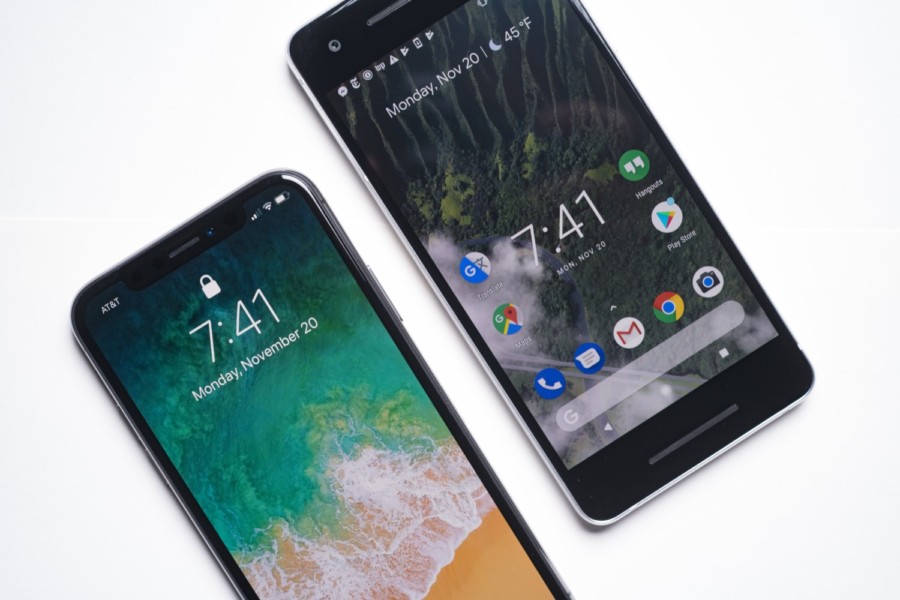
Last year when the Google Pixel was announced, we compared it to its closest competitor, the iPhone 7. And then for fun, we compared those images against the Leica Q since they all share a equivalent field-of-view to a full frame 28mm lens. This year, Google and Apple both announced hardware upgrades that scored top marks according to DxO, so we decided it was time to see how the Google Pixel 2 ($649) and the iPhone X ($999) compare to the Leica Q ($4250).
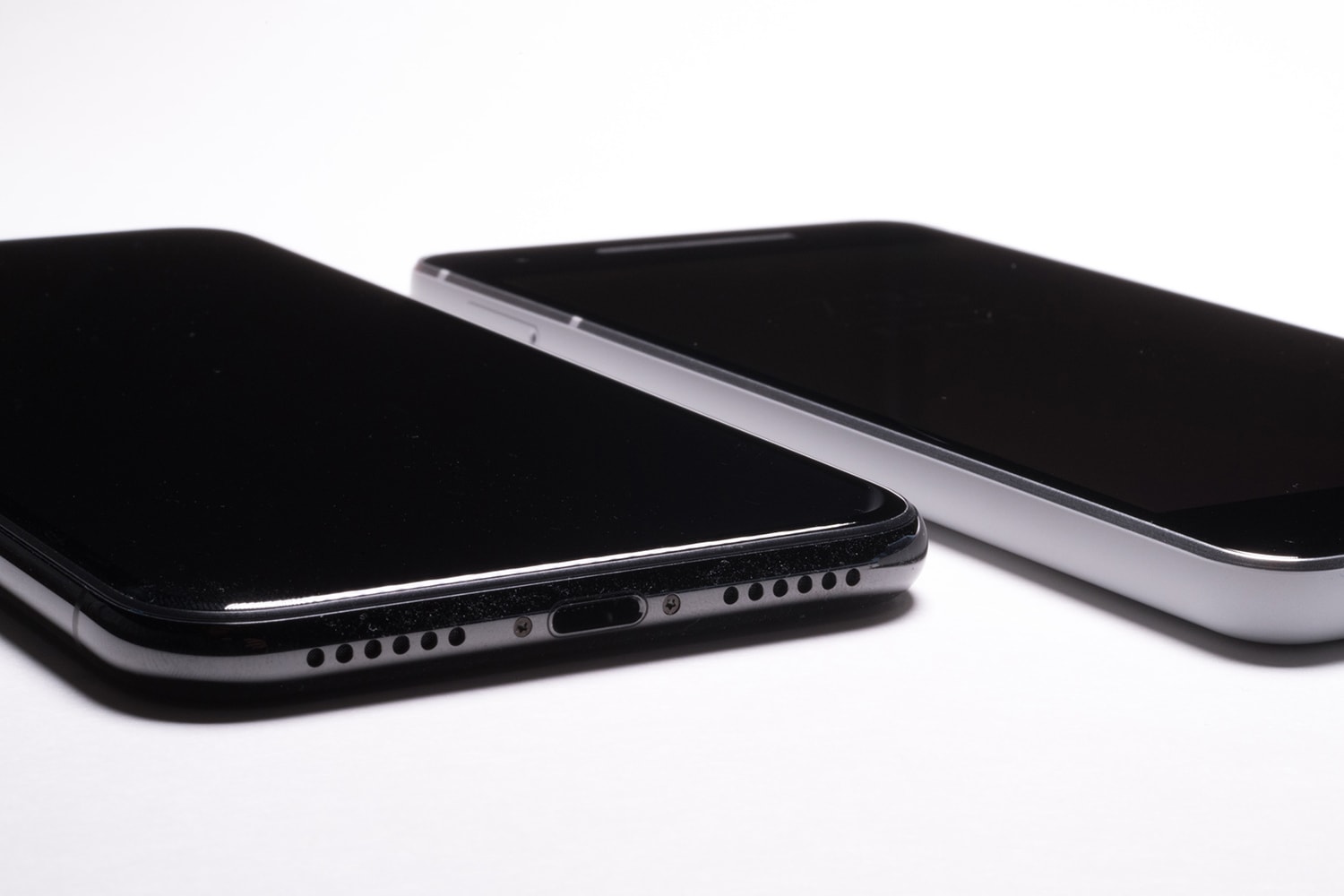
Photo by Allen Murabayashi
The size and form factor of the phones are very similar. The iPhone has a glass back to enable wireless charging, and incorporates a vertically stacked two lens design to provide optical zoom.
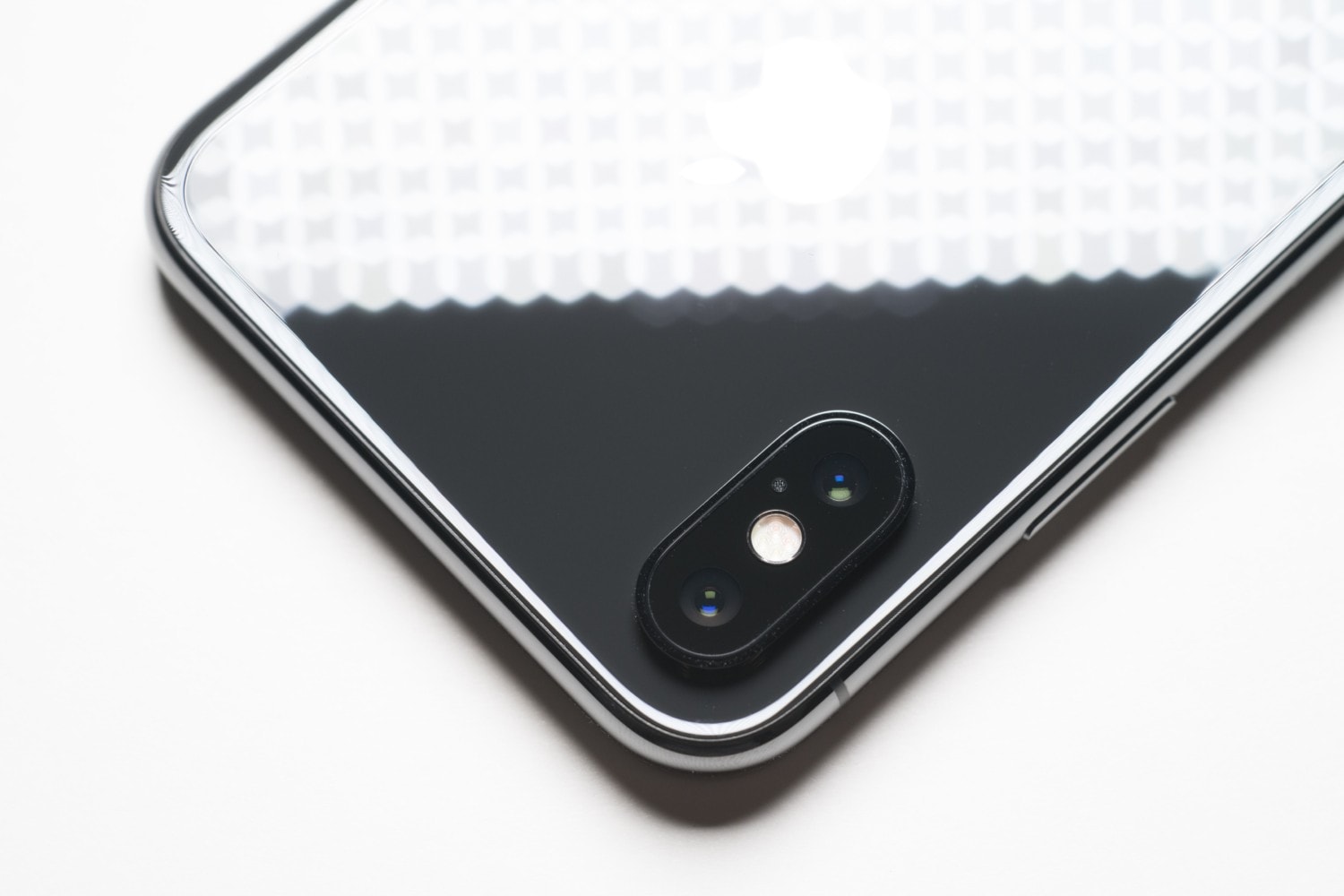
Unlike its XL big brother, the Pixel 2 features a single lens, but the new model introduces optical image stabilization (OIS). The lack of OIS in the previous version was my chief complaint of an otherwise fantastic camera.
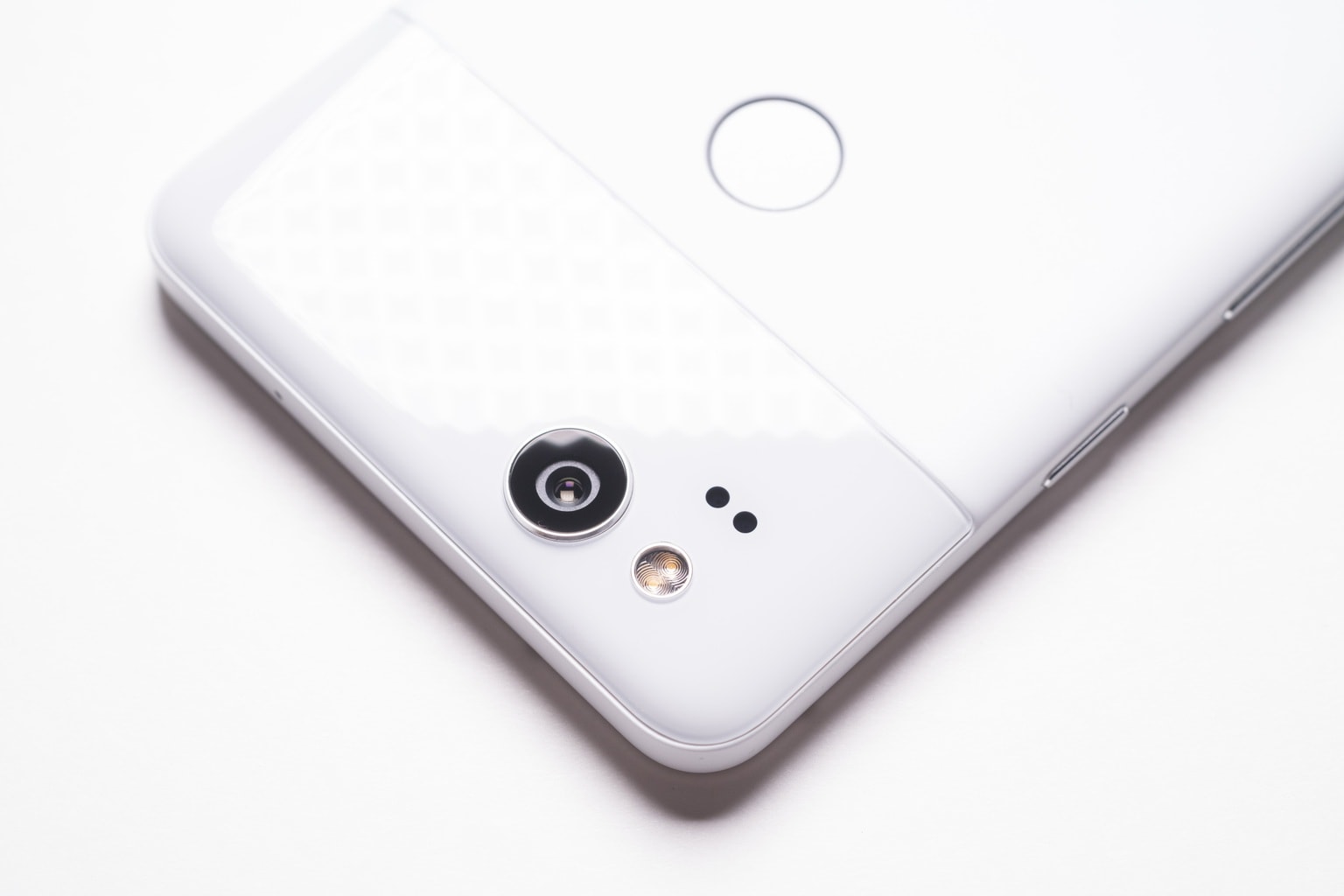
Photo by Allen Murabayashi
The native camera apps emphasize different features in the menu system. For the Pixel 2, gridlines are much more easily accessible and come in 3×3, 4×4 and golden ratio formats. On the iPhone, you have to go through the General Settings -> Phone menu to activate the grid lines, and 3×3 is the only option. It’s a fairly glaring oversight for people who rely on the guides to compose or straighten their images. The Pixel 2 also gives you color temperature controls which is probably overkill for most consumers, but a welcome addition for more advanced photographers.
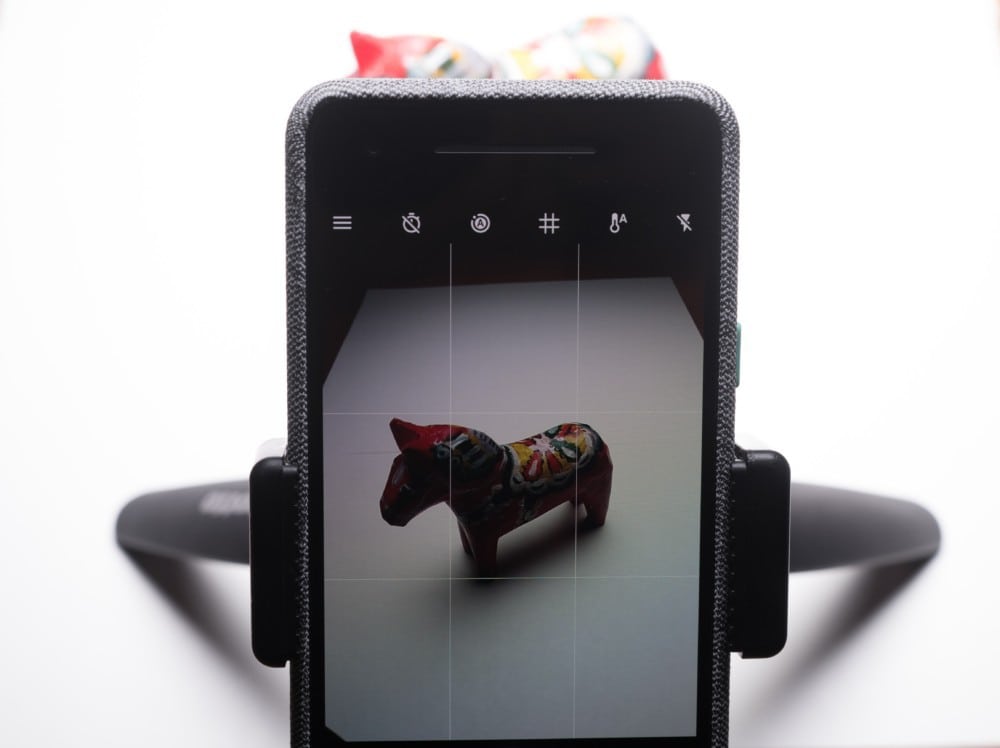
The Pixel 2 camera app. Photo by Allen Murabayashi
On the other hand, the iPhone makes selecting the camera modes (photo, video, slo-mo, timelapse, portrait, etc) much easier by providing a sliding menu below the image preview. The Pixel 2 relies on the hamburger icon in the upper left to switch modes.
Let’s look at some images.
Arc de Triomphe
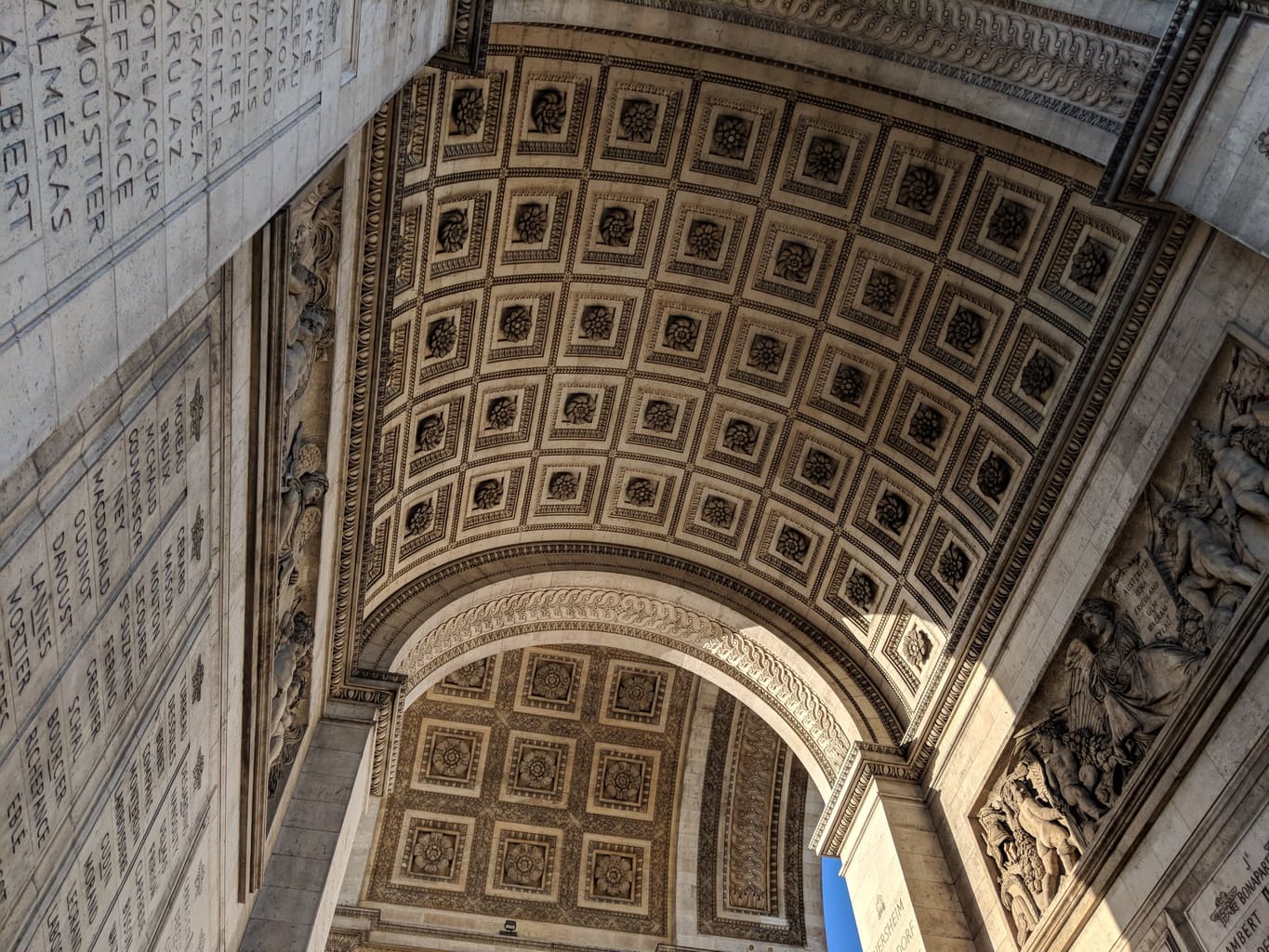
Pixel 2. ISO 52, f/1.8, 1/1672s
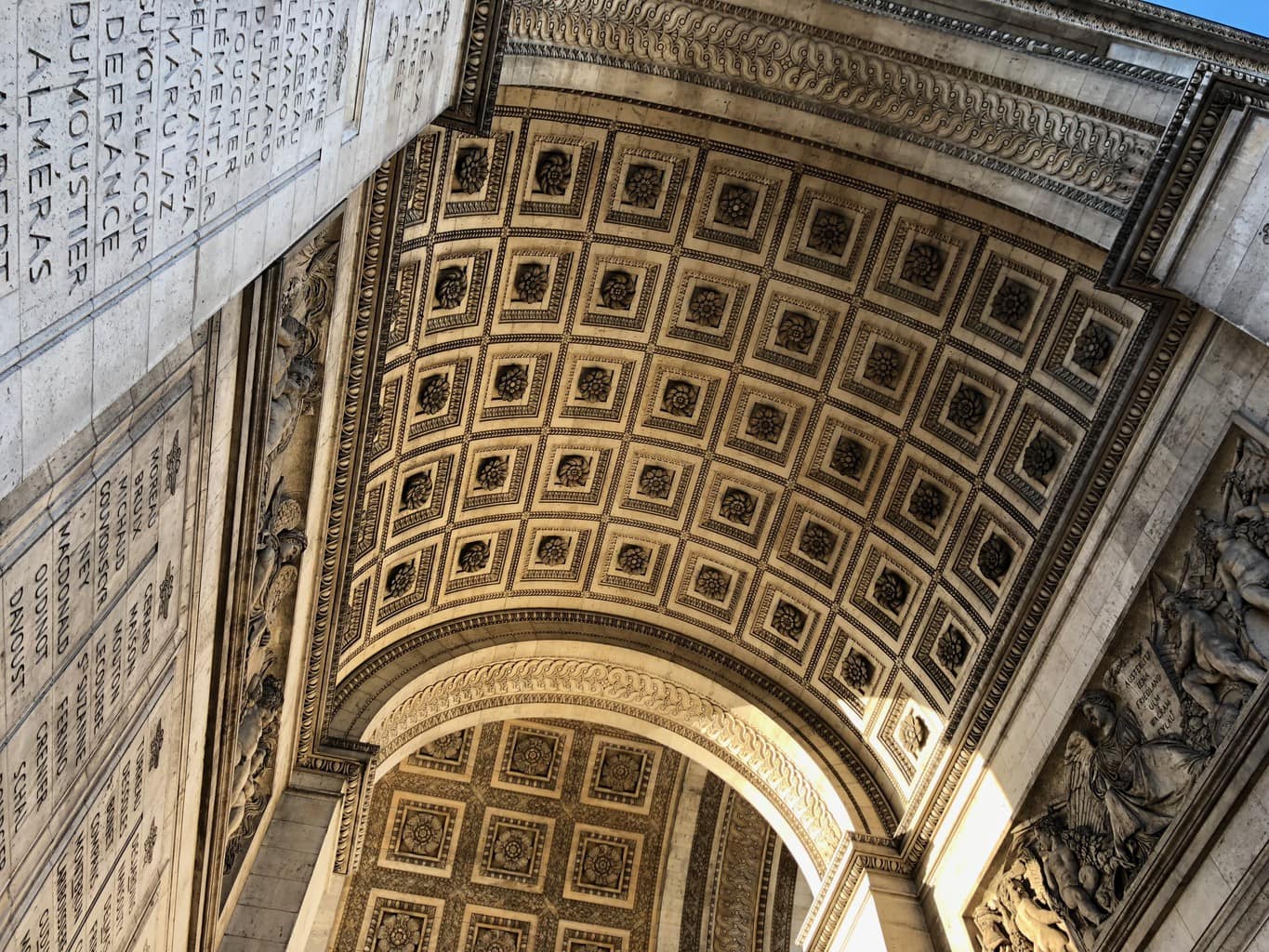
iPhone X. ISO 20, f/1.8, 1/128s
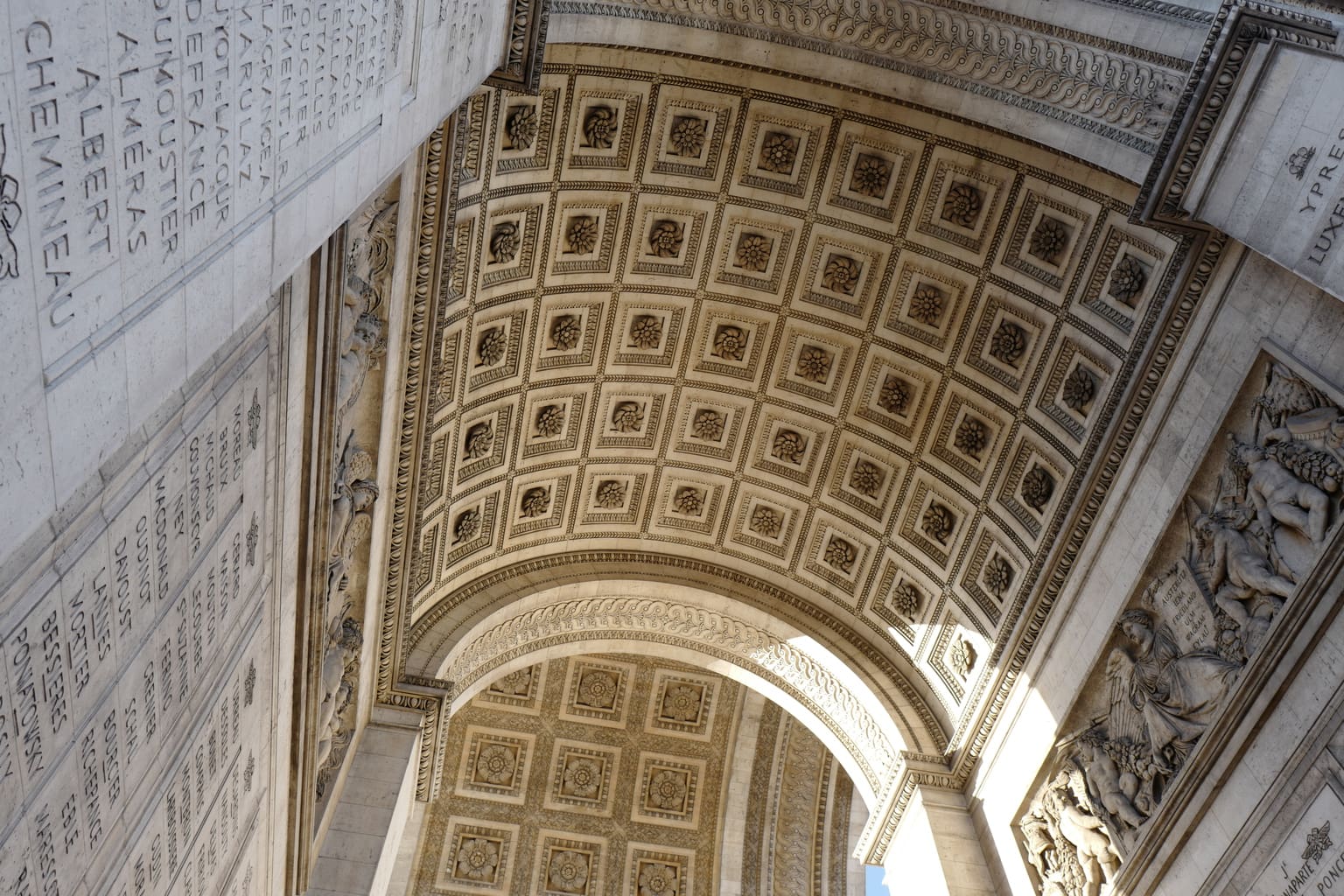
Leica Q. ISO 400, f/4, 1/500s
In this case, I prefer the more neutral tones of the Pixel 2 even though the morning light is very warm. Pixel peeping reveals more edge detail in the iPhone image.

Paris Skyline
At 10am in the morning, the sun is still hanging low in the sky which created a challenging lighting scenario for both phones.
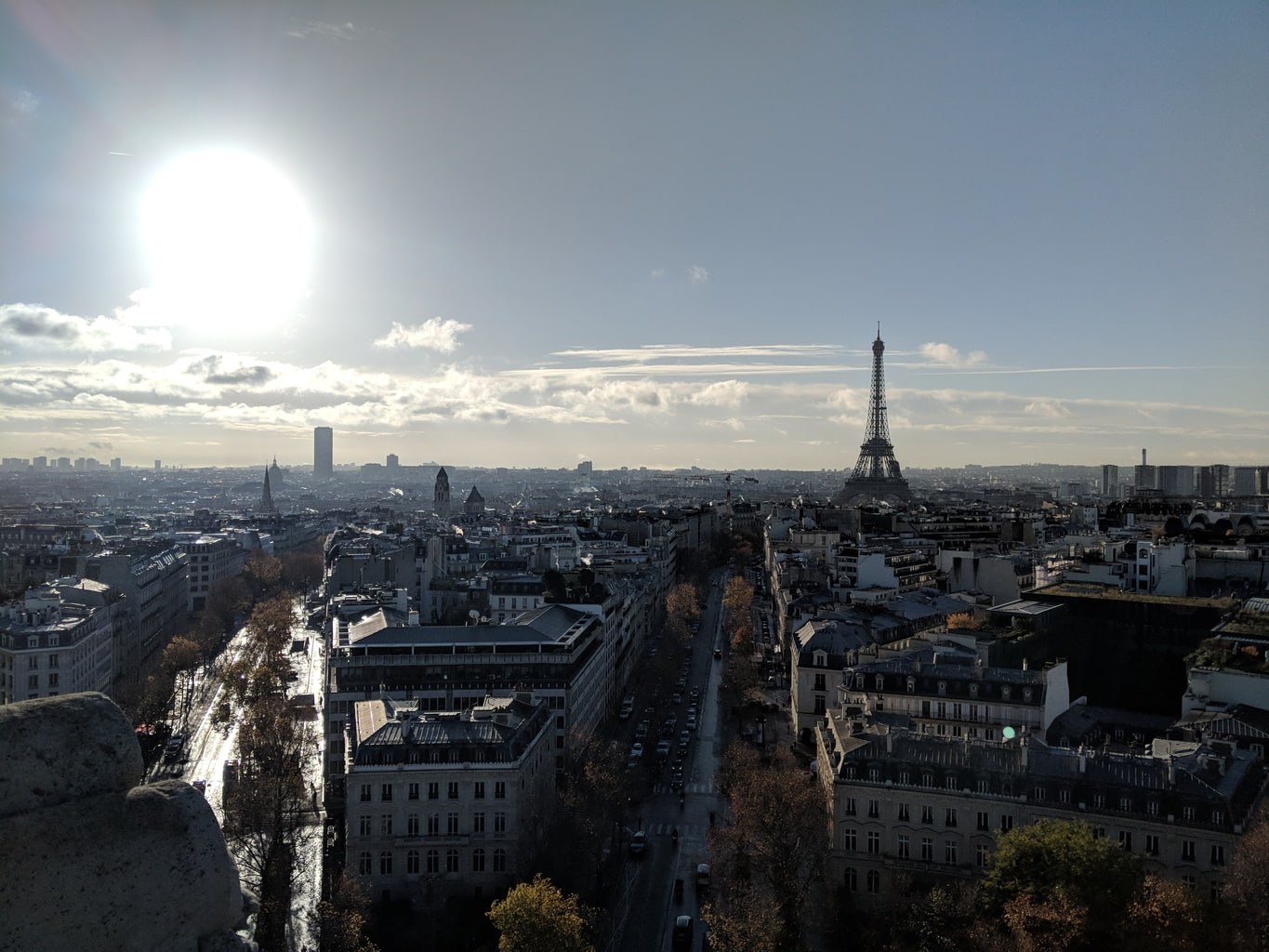
Pixel 2. ISO 82, f/1.8, 1/23256s

iPhone X. ISO 25, f/1.8, 1/8000s
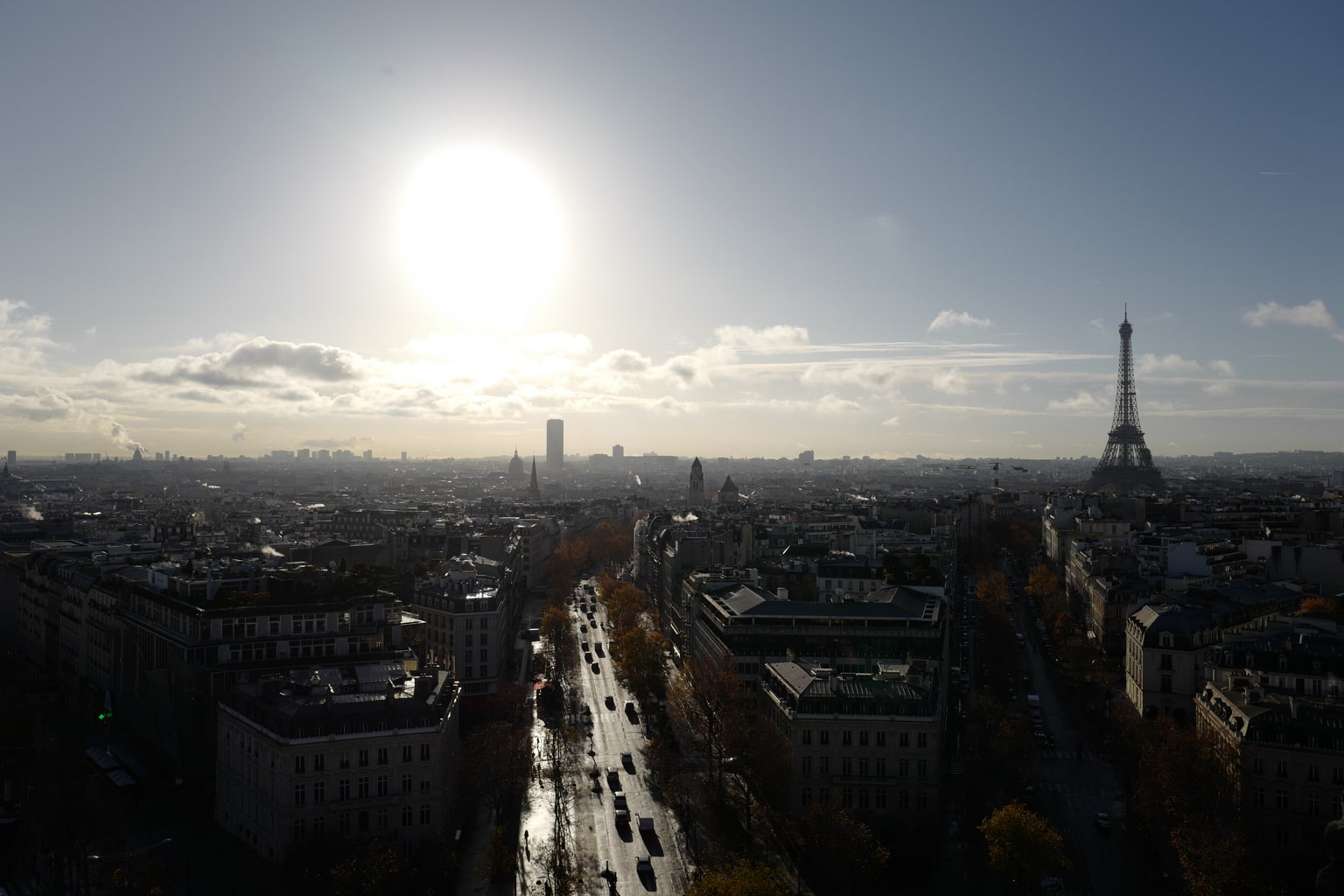
Leica Q. ISO 100, f/4, 1/3200s
The Pixel 2 produced higher contrast in the shadow areas and had much flatter color than the iPhone X. Both produced a lens flare spot, although the Pixel 2 is less noticeable based on position and the lack of saturation. The Leica’s out of camera JPG suffers from no lens flare, but has much darker shadow areas. Of course, Leica’s RAW files can easily be processed to pull shadow detail.
Telescope
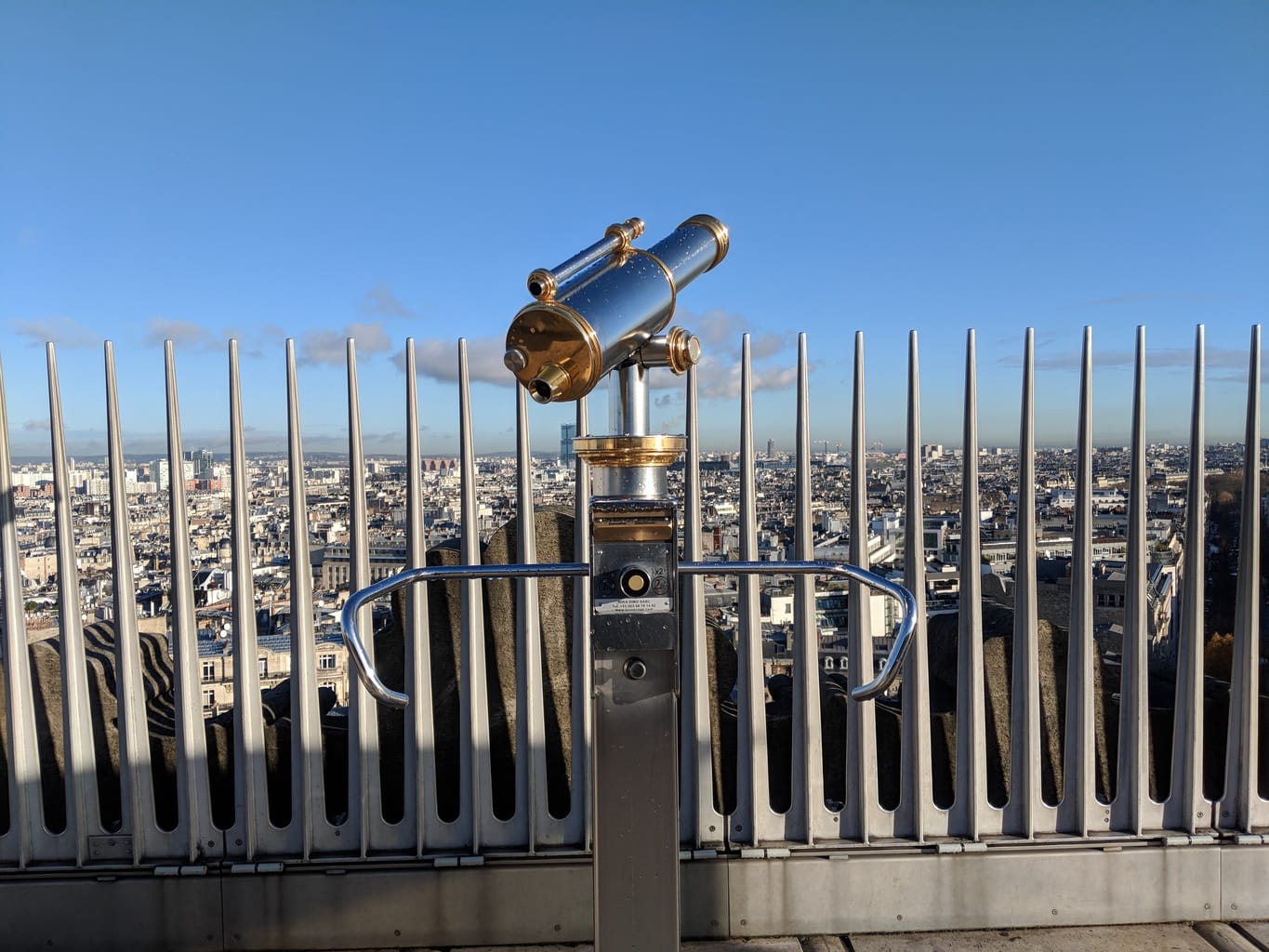
Pixel 2. ISO 52, f/1.8, 1/2597s

iPhone X. ISO 20, f/1.8, 1/1656s

Leica Q. ISO 100, f/1.7, 1/6400
Last year, the Pixel produced noticeably warmer images. This year, the tables have turned. The Leica’s wide aperture provides a very pleasing shallow depth-of-field when shot wide open.

iPhone X. ISO 16, f/2.4, 1/706s, Portrait mode
Like a few other phones in the market, the X uses computational photography to simulate a shallow depth-of-filed, which the Leica can do optically. The feature isn’t without problems. Notice the telescope handle on the right hand side. The software incorrectly determined that it was part of the background even though the left side is properly sharp.
Foodie
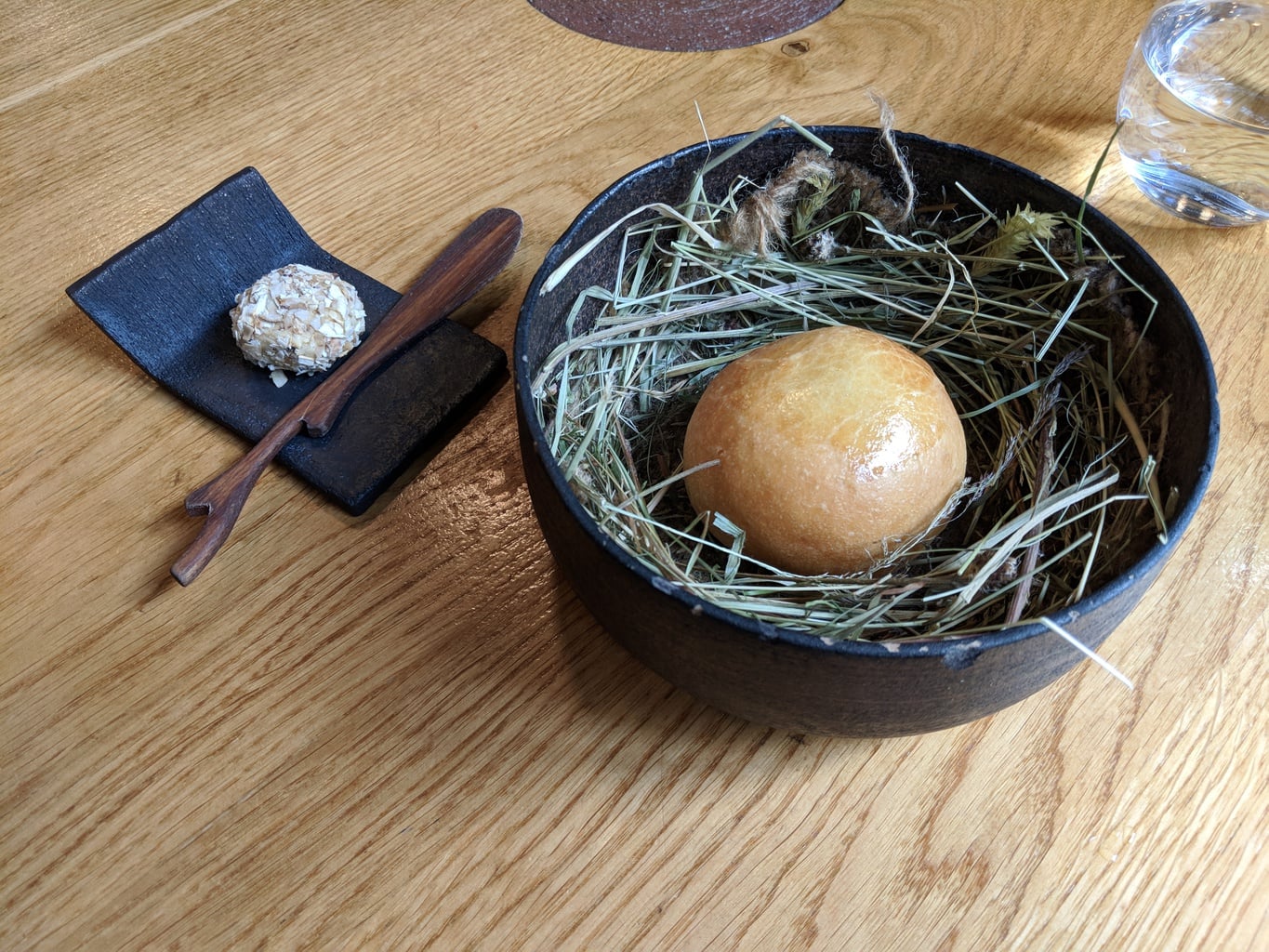
Pixel 2. ISO 155, f/1.8, 1/100s.

iPhone X. ISO 40, f/1.8, 1/25s
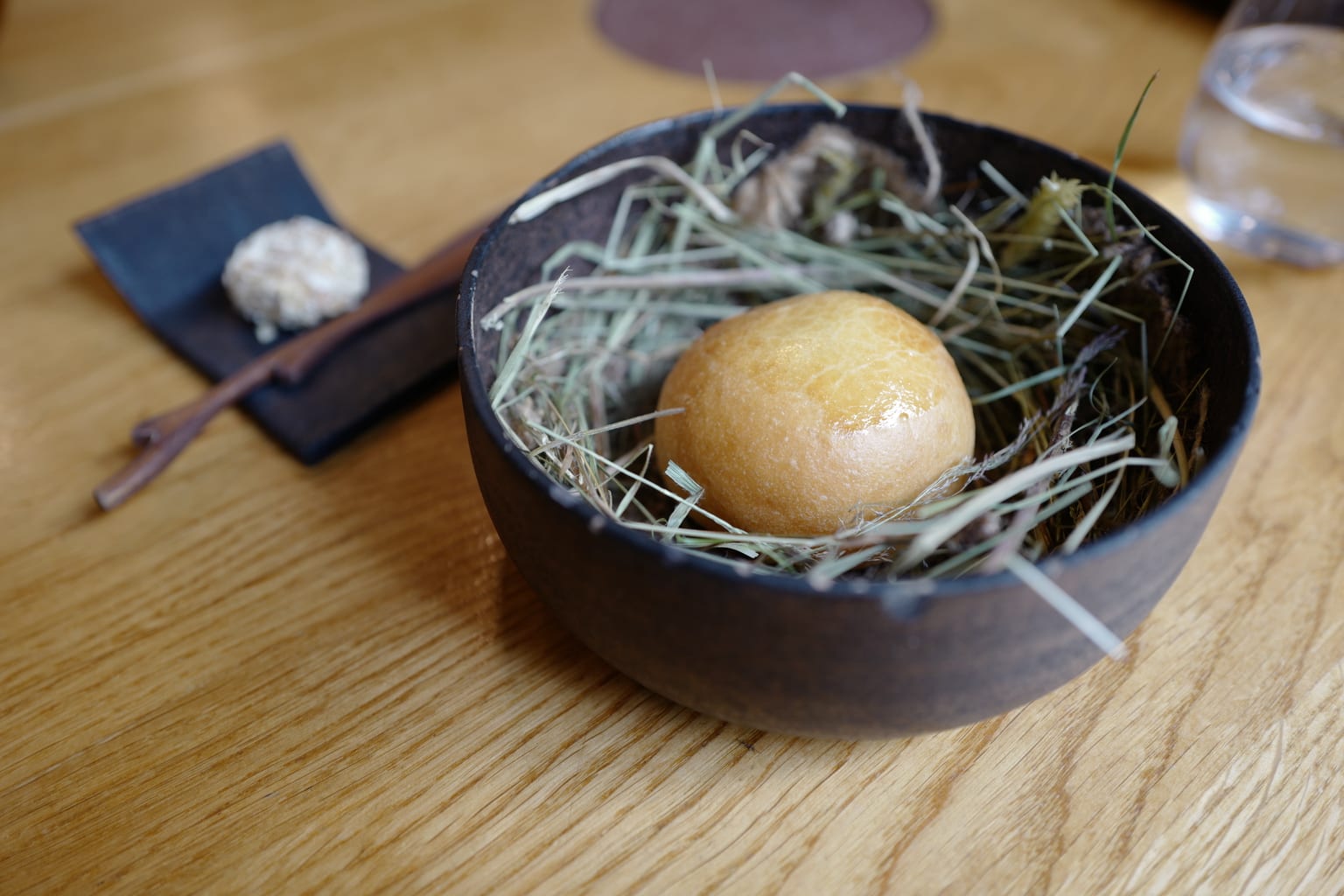
Leica Q. ISO 200, f/2.8, 1/60s
Manhattan Buildings at Dusk
Smartphone image quality has made leaps and bounds over the past few years. In the past, the main failure point was low light situations.
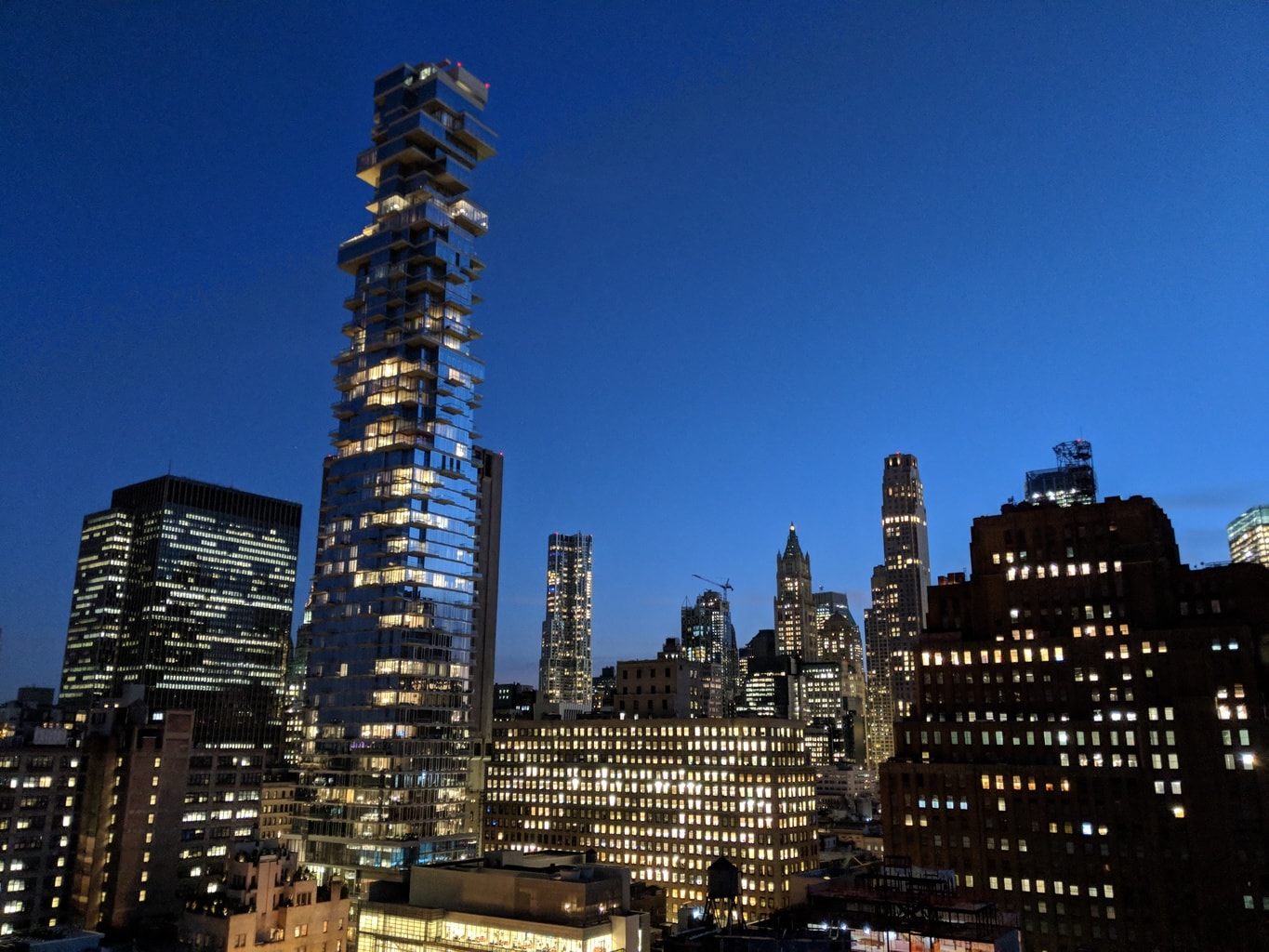
Pixel 2. ISO 400, f/1.8, 1/15s

iPhone X. ISO 200, f/1.8, 1/4s
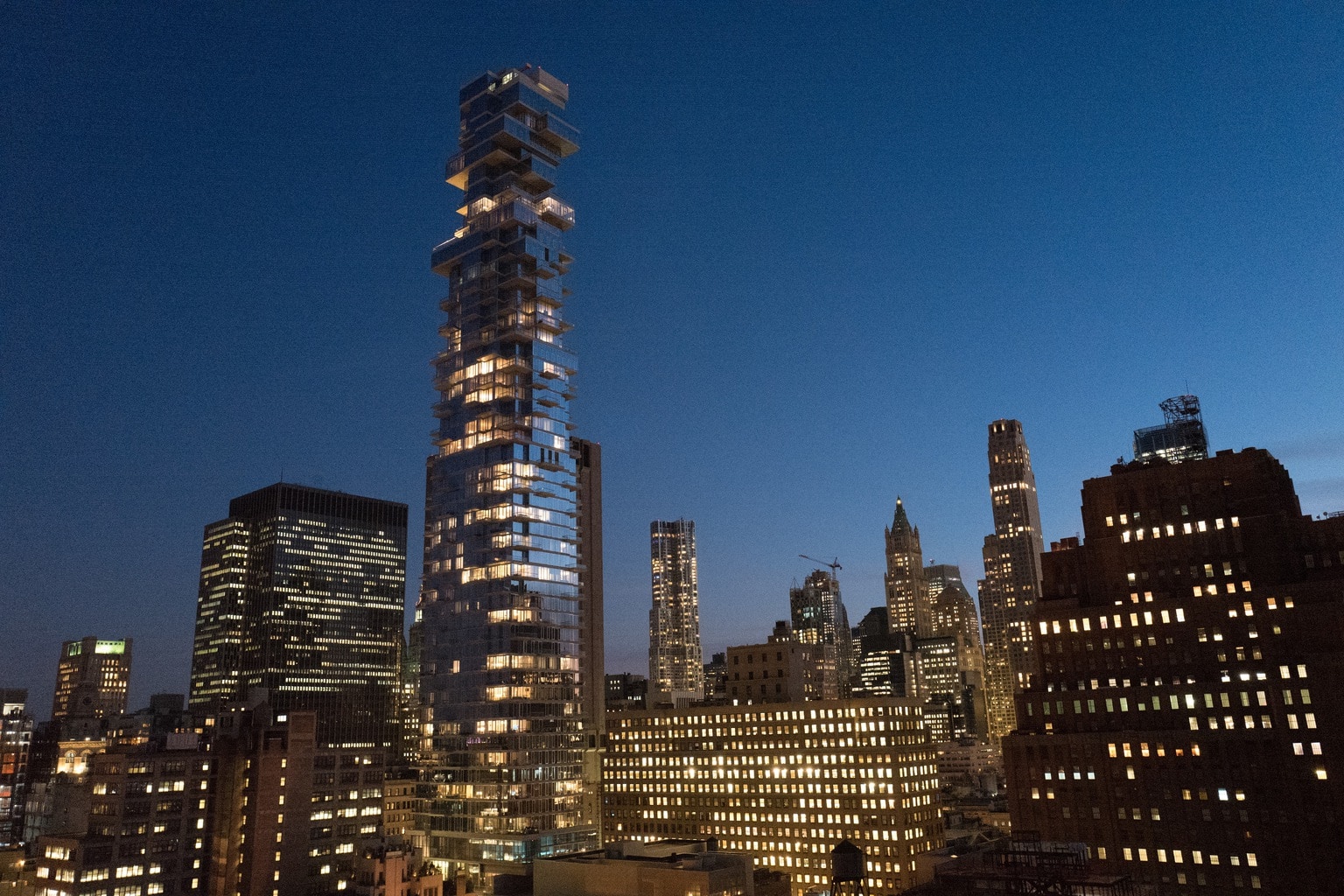
Leica Q. ISO 12500, f/4.5, 1/40s
Shooting in auto provided an interesting test for a low light situation. The iPhone’s OIC still looks superior to the newly implemented Pixel 2 version, and the colors seem much more natural. Because I shot with a smaller aperture, the Leica boosted the ISO significantly to keep the shutter speed in the 1/30th range, and yet, the image still seems to have better detail.
Most notably, it’s interesting to see how each camera rendered the scene. All images exhibit some keystoning – the falling away of buildings – due to the tilt of the camera. But the Leica has the best looking results in containing barrel distortion, namely the lines at the outer edges of the frame seem straighter to my eye.
And then of course, the Leica can be manually set to shoot very low shutter speeds giving the photographer the greatest creative control. Here’s the same image on a small tripod at the lowest base ISO.
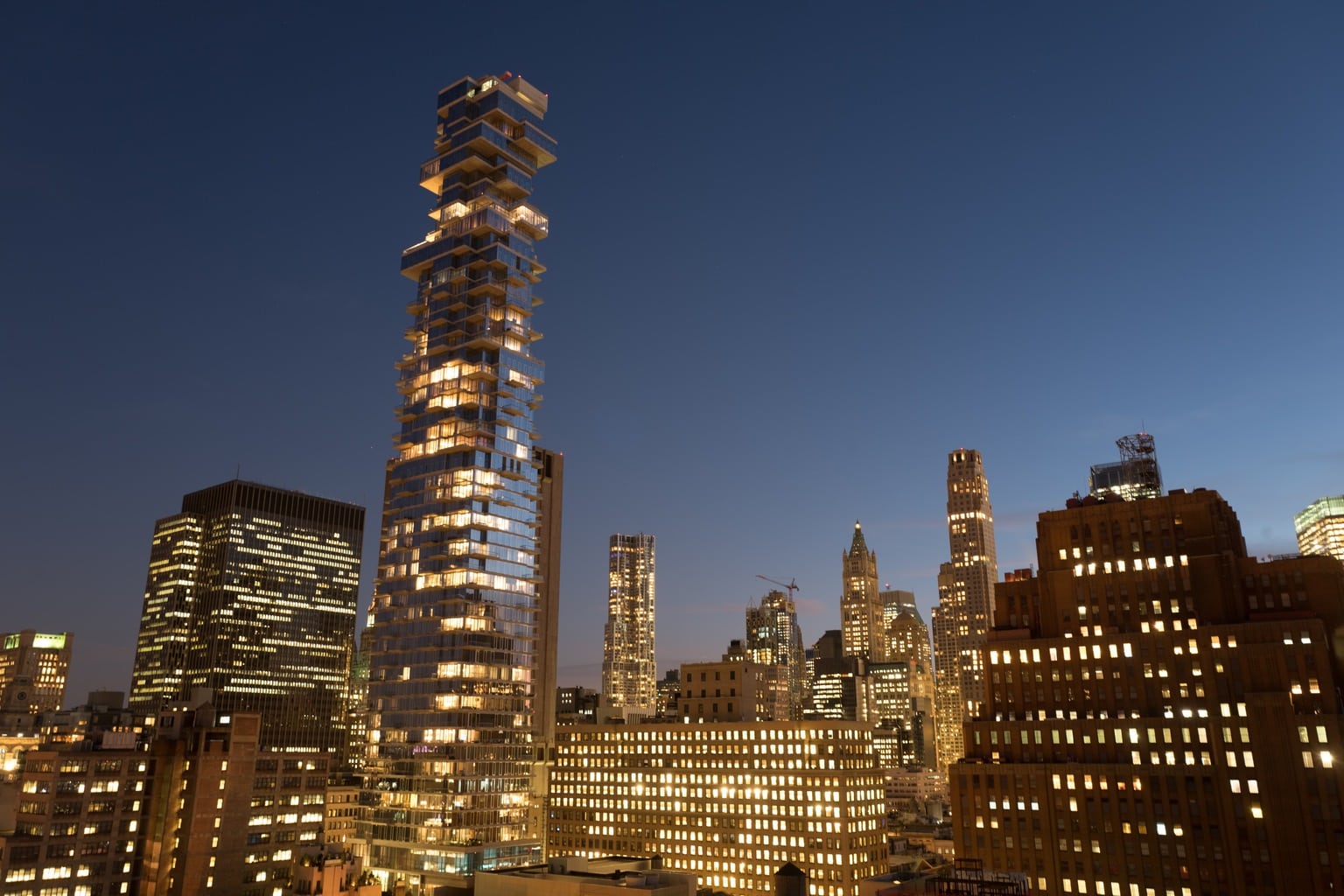
Leica Q. ISO 100, f/4, 5s.
Even at a small size, the image quality advantage is readily apparent. The full-frame sensor simply captures more light for a better signal-to-noise ratio. And even though the phones have the advantage of some pretty powerful computational photography, it’s still no match for superior optics and more light capturing capability.
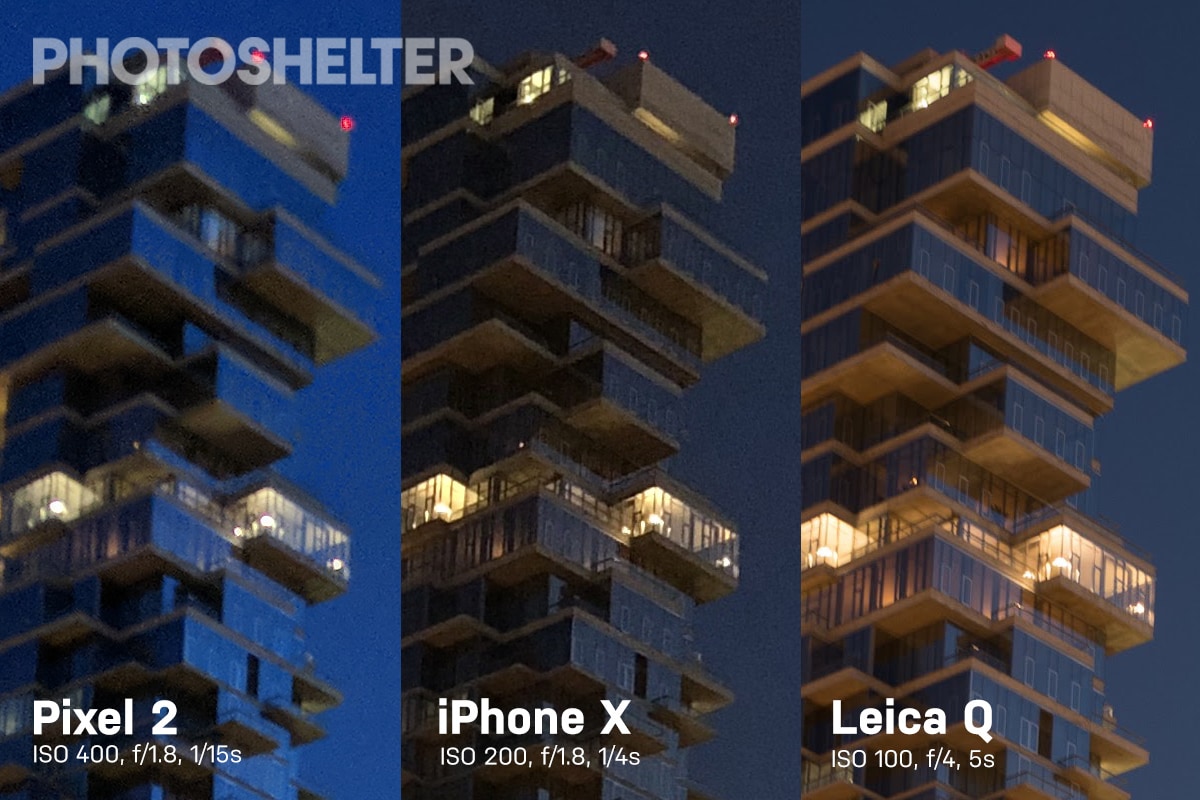
Conclusion
As we found out last year, both the Google and Apple offerings are pretty darn good given the size of the sensor. It’s interesting to examine the EXIF and compare the various ISO/shutter speed combinations that the respective software chooses.
The iPhone still has superior low light capabilities, even with the Pixel 2’s new OIC capability. When the photon count is low, the iPhone images look sharper and the colors seem more natural. And we didn’t even mention the phone’s huge screen! Even though both phones are the same size, the iPhone does away with the top/bottom bezel, and it makes a huge difference in screen real estate.
For those photographers still hanging on to the dream of carrying a dedicated piece of hardware, fear not! Large sensors and superior lenses still deliver better image quality, period. I thought the difference in bright daylight would be more nuanced, but to my eye, the Leica still comes out ahead as the clear winner. Of course, you’ll pay a pretty penny for the advantage.
Which should you choose? Do you like warmer images? Higher contrast? More shadow detail? These are the out of the box choices that each manufacturer is making for you. Either camera will give you stellar results, particularly if you’re only viewing the images on a small device.


